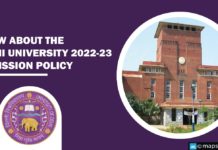As India confronts the second wave of a novel coronavirus, it still recovers from the stigma of Covid that began last year with the labeling of a community for the spread of coronavirus. Stigmatization includes unscientific claims, lack of knowledge about how COVID-19 spreads. It gives an opportunity to blame someone with irrational information leading to rumors and myths.
Goffman was the first person who came up with the term stigma to refer to visible characteristic features (such as a cut of burnt) of the individuals that enable the society to devalue and consider them not suitable for their inclusion and participation in mainstream society. It can occur when people associate a disease like a coronavirus with a population, community, or nationality or after a person has recovered from the disease or been discharged from home isolation or quarantine.
It makes people conceal their symptoms or illness and prevents individuals from undertaking healthy behaviors. This implies that stigma can make it cumbersome to contain the spread of an outbreak.
Studies in 30 to 40 countries have discovered that stigma is universal. For example, It is being stated by nearly 90% of people with schizophrenia across the world. It may come in the form of variable social exclusion. For instance, adversely affecting marriage prospects in India.
Last year, the Tablighi Jamaat congregation took place in Delhi and people accused Muslim religious body flouting the covid appropriate rules. The mainstream media and political comments began which created a diversion from tackling coronavirus, the disease which doesn’t see any religion.
The Bombay High Court came down strongly on the print and electronic media for the “big propaganda” against the foreigners who were a part of the Tablighi Jamaat congregation in Delhi’s Nizamuddin, which became a “super-spreader” coronavirus event.
The frontline workers also get slammed by the people who stigmatize, where they have to endure the hurled emotional and verbal abuses from them. This creates an issue for the country itself which raises mental health issues.
The easternmost part of India consists of eight states: Sikkim, Assam, Arunachal Pradesh, Manipur, Nagaland, Meghalaya, Mizoram, and Tripura. People who reside in Northeast India have been the victims of racism from the mainlanders in India for a long time as they have typical mongoloid features, which resemble the features of Chinese individuals. The residents of Northeast India have mostly confronted racism and discrimination and have been often termed as foreigners in their own country.
The racism towards Northeast Indians has increased during the coronavirus pandemic, and numerous cases were registered where Northeasterners were called “corona” spat at, socially prevented, landlords asked them to go from their houses where they were living as tenants, beaten, terminated from employment, or had a problem in receiving health care facilities.
Delhi authorities ceased the process of putting notices outside the homes of people infected with novel coronavirus because this gave a rise to the social stigma linked with the disease and then caused others to hide their illnesses.
People who become the victims of stigmatization due to Covid may get excluded or shunned in social situations. They may get refusal from a job or educational opportunities, with a denial to access adequate and basic housing and health care.
According to the United Nations, “fears, rumours and stigma” are challenges accompanying Covid-19 worldwide.
The negative behaviour and the outlook with which it is seen in society further cause the nature of disharmony among citizens of the country.
Community leaders and social media influencers can step in and assist in eradication the stigmatization of coronavirus. They can ask to maintain the privacy and confidentiality of those seeking healthcare related to the disease and those who may be part of any contact investigation. Moreover, making changes in the negative language used on social media could also resolve the stigma issues.










